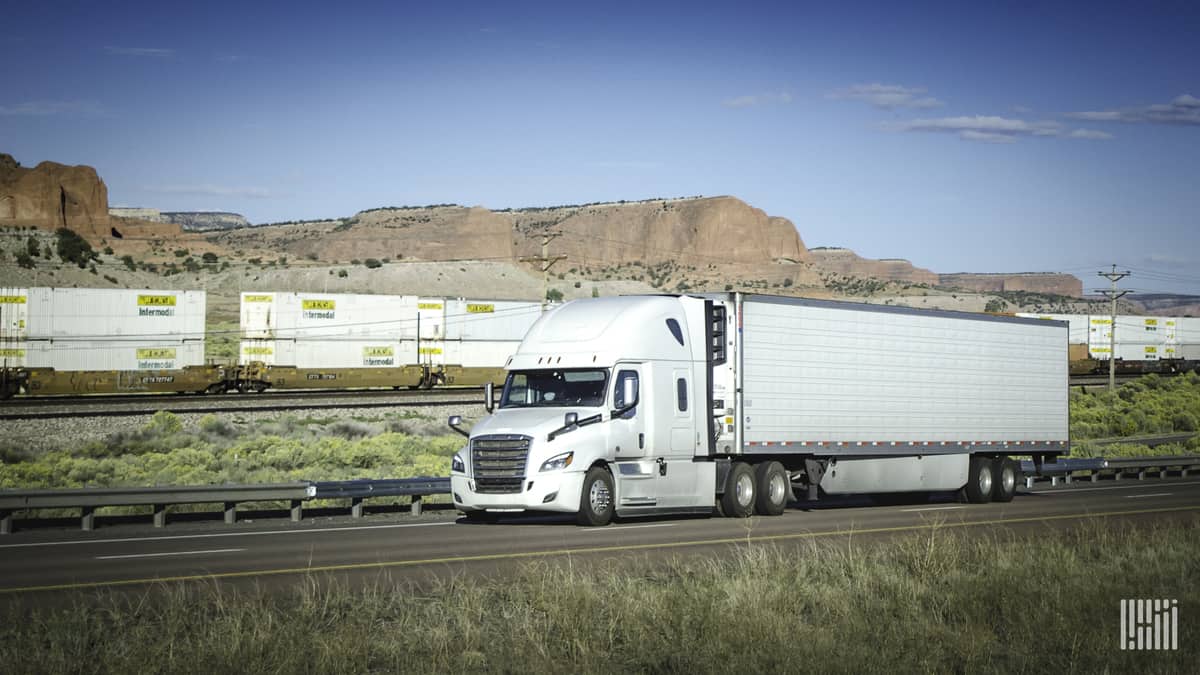With U.S. coal volumes facing a secular decline, U.S. Class I railroads are focused on making their intermodal and merchandise services competitive with the trucking market by revamping their strategy on interline lanes, judging from recent actions by the railroads.
On Monday, Union Pacific (NYSE: UNP) told customers of its premium segment that it would open a number of domestic interline lanes originating on Union Pacific (UP) and destined for various points in the Eastern U.S. These lanes, which interchange with Norfolk Southern (NYSE: NSC) and CSX (NASDAQ: CSX) will be activated on Saturday.
UP’s premium segment includes its intermodal service. Shipping finished vehicles and automotive parts is also part of UP’s premium segment.
Meanwhile, Norfolk Southern (NS) said the opportunities to take market share away from trucks are not only in intermodal but also in merchandise. NS’s merchandise segment includes commodities such as agricultural products, automotive parts, chemicals, construction materials and metals.
“We’re working feverishly with our interline partners and with our customers to look at new lanes that offer value to our customers and offer value to our shareholders. So this is not static. It’s a dynamic review of our overall franchise, finding areas where we can provide value, and we can support our channel partner’s growth,” Alan Shaw, NS’s chief marketing officer, told investors during his company’s fourth-quarter earnings call on Wednesday.
The focus on interline lanes comes ahead of expectations that the trucking market could tighten in the second half of this year.
The “Class I’s are looking to add truck-competitive volumes, especially as a potential [second half of 2020] trucking recovery” and a large increase in trucking prices loom large, said Jason Seidl, transportation director for investment firm Cowen, in a research note on Wednesday.
Both UP and NS said their decisions to open or seek lane opportunities are part of their wider efforts to deploy precision scheduled railroading (PSR), an operating model that seeks to streamline operations.
The newly open lanes to the Eastern U.S. are “as a result of Union Pacific’s Unified Plan 2020 [UP’s version of PSR], and our objective of providing safe and reliable service products,” UP said in its Monday note to customers.
“What’s unique about Norfolk Southern is that as we implemented PSR, our service got better. And so we’re in a great position to grow as we move forward. And if you think about truck and the opportunities there, it aligns perfectly with the unique strengths of our franchise,” Shaw said.
The railroads will need to keep up service levels this year if they want to compete against the trucking market, Seidl said.
“If NSC can keep improving its service levels with its precision scheduled railroading (PSR) implementation, it should be able to make its intermodal product more reliable. It is this increased reliability that will likely matter more for potential modal shifts back to the railroad,” Seidl said.
Meanwhile, CSX said during its fourth-quarter earnings call last week that it had completed the lane rationalizations it started in 2017, but it’s looking to grow volumes on the lanes it has.
“We expect intermodal volumes to increase in 2020 as we have now fully lapped the lane rationalization impact and look to grow the reengineered network,” CSX CEO Jim Foote said.
The Class I railroads say the loose truck market of 2019 put pressure on rail. NS attributed an 8% year-over-year decline in intermodal revenue in the fourth quarter of 2019 to excess truck capacity in a weak freight environment. UP cited similar conditions.
International intermodal comparisons were also more challenging in the fourth quarter because of the pull-ahead of inventories due to the U.S.-China tariff dispute, NS said.
The railroads have been seeking ways to make up for lost rail volumes that have resulted from declining U.S. coal production. Coal carloads represented nearly a third of total U.S. carloads in 2019, according to the Association of American Railroads, and U.S. coal production is expected to decline even further over the next several years amid low natural gas prices.
“Our eyes are on that $800 billion truck market. And that’s where the growth opportunities are. And that’s where we’re going to see improvement as the year progresses… It requires fierce competition and putting new products out there, new logistics services that our customers value,” Shaw said.










